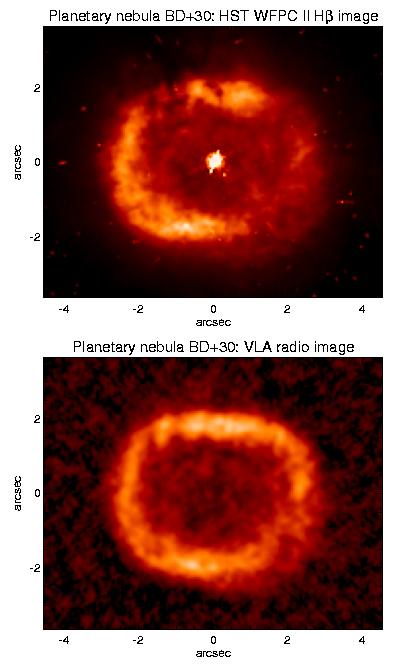
The third image is a comparison of radio and optical images of the planetary nebula BD+30deg 3639. Like LBVs (see another section on this home page for a description of these stars), planetary nebulae are stars which throw off their outer layers and produce spectacular nebulae, as in this object. However, the stars themselves are not particularly remarkable, unlike LBVs which are very massive. In this case the upper panel shows an image in a line of the element hydrogen taken with the Hubble Space Telescope (courtesy of Pat Harrington), while the lower panel shows a radio image at about the same resolution made with the Very Large Array radiotelescope in New Mexico. There are important differences between the two images: in the radio we see a much more complete ring of emission than we do optically. This is because there is dust mixed with the gas in this nebula, and the dust blocks visible light while being transparent to radio waves. Thus comparison of the two images shows us where the dust is located, and can tell us which side of the nebula is closest to us (the left side).